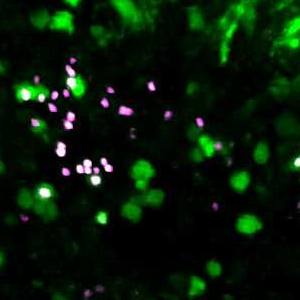-
Minnesota Partnership Project Increases Accuracy in Malaria Testing

Malaria cases have dropped dramatically in the last decade in part due to the use of rapid diagnostic tests that allow more effective prevention and treatment. However, these tests – called lateral flow assays or LFAs -- are not always sensitive enough to detect all the disease at low concentrations. For instance, some patients go undetected by LFA when parasite numbers in the bloodstream are low. This in turn can lead to asymptomatic patients who continue to carry and spread malaria, greatly reducing efforts to eliminate the disease.
University of Minnesota researcher John Bischof, Ph.D., and his collaborators are developing a diagnostic tool that reads a thermal signature from laser heated gold nanoparticles to enhance the sensitivity of LFAs for malaria. Testing is now underway on two beta prototype thermal contrast amplification (TCA) readers that can detect malaria up to eight times better than current technology. In September, one was placed at in the Mayo Clinic laboratory of Bobbi Pritt, M.D., Mayo’s head of clinical parasitology. It is part of a clinical study that will conclude in summer of 2016.
Partnership grant moves device from lab to clinic

Before receiving a two-year research grant from the Minnesota Partnership for Biotechnology and Medical Genomics in November of 2013, only a prototype of the TCA reader existed. Since receiving the grant, Dr. Bischof and colleagues were able to engage a professional partner to transform the prototype into a rugged and portable system that was moved from the University to Mayo Clinic for the clinical study. The data from this study will be used to make one more round of improvements to the TCA reader so it can be evaluated by the U.S. Food and Drug Administration.
In addition to diagnostics, laser gold nanoparticle heating can also help in other biomedical fields. For instance, in the early 2000s laser-irradiated gold nanoparticles were beginning to be used in the treatment of cancer. This stimulated Dr. Bischof and colleagues to more carefully study precisely how laser interacts with gold particles, and to quantify the heat from the particles. Dr. Bischof has submitted a scientific paper on the topic that may help improve gold nanoparticle laser heating in both diagnostic and therapeutic applications in the future.
By mid-2016 Dr. Bischof is hoping to demonstrate improved sensitivity of malaria detection over current gold nanoparticle-based LFA methods. He plans to then redesign the gold nanoparticles to get even more heat out, to possibly increase sensitivity to 100 times greater than current methods.
Better detection of the disease leads to better prevention and treatment. As Dr. Bischof predicts, “Malaria elimination may become a real possibility.”
January 29, 2016







